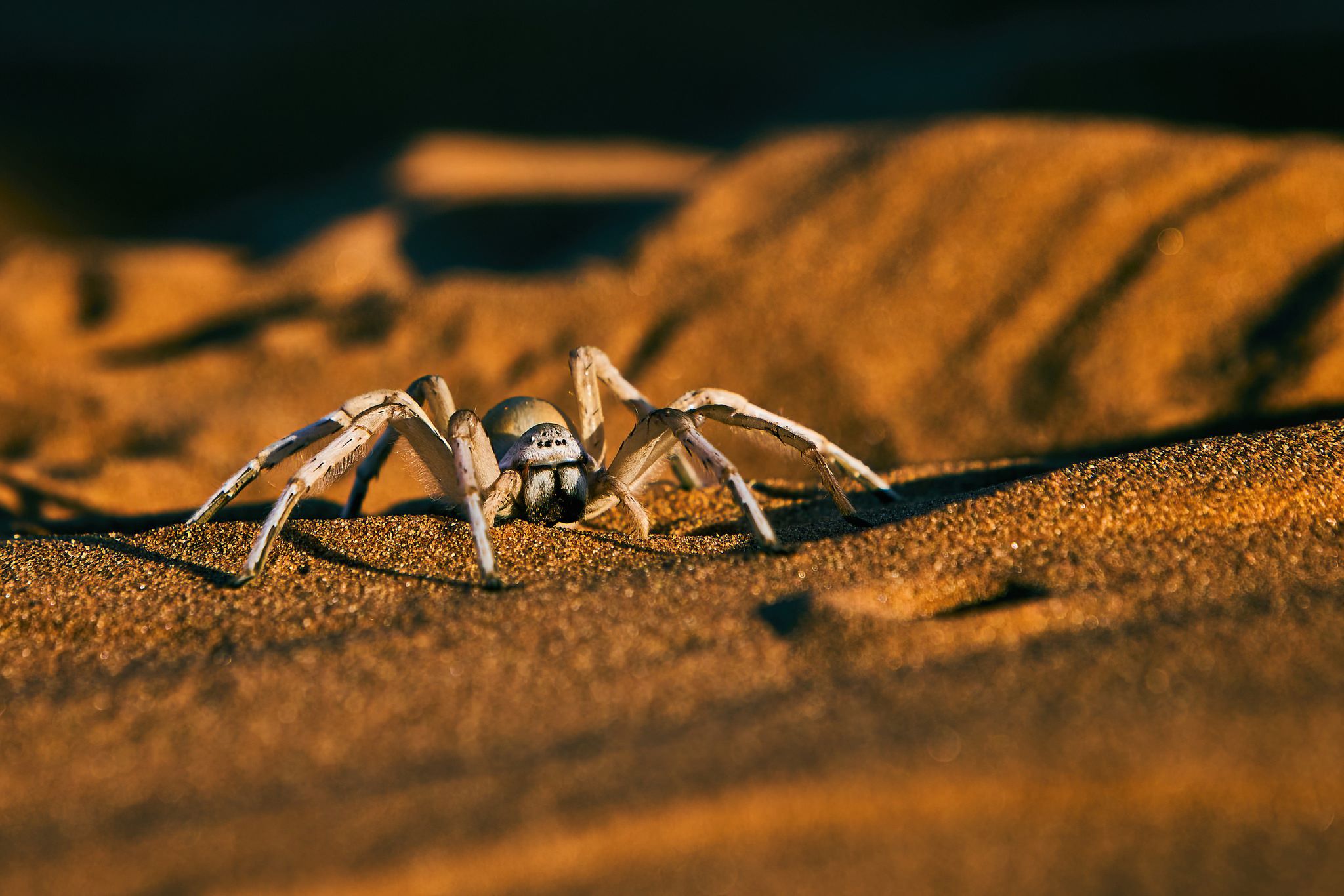
The Golden Wheel Spider, also known as the Moroccan flic-flac spider, is a fascinating creature that captivates both researchers and nature enthusiasts alike. This unique species, scientifically named Carparachne aureoflava, is found exclusively in the sandy dunes of the Namib Desert in southern Africa. What makes this spider truly remarkable is its peculiar way of locomotion, known as the “cartwheeling” or “flic-flac” behavior.
In this article, we will delve into the world of the Golden Wheel Spider and explore 18 captivating facts about this incredible arachnid. From its physical characteristics and hunting techniques to its impressive adaptations and survival strategies, we will uncover the secrets of this enigmatic spider. So, prepare to be amazed as we embark on a thrilling journey to discover the mysteries of the Golden Wheel Spider.
Key Takeaways:
- The Golden Wheel Spider is a rare, cartwheeling arachnid found in Namibia. It’s nocturnal, has a unique mating ritual, and plays a vital role in the desert ecosystem by controlling insect populations.
- Despite their venom, Golden Wheel Spiders are not aggressive towards humans. They are protected in Namibia and have adapted to extreme temperatures, making them fascinating and important creatures in the desert ecosystem.
The Golden Wheel Spider is a rare arachnid species found in the deserts of Namibia.
With its unique appearance and fascinating behavior, this extraordinary creature has captured the attention of both researchers and nature enthusiasts alike.
These spiders are known for their incredible ability to cartwheel down sand dunes.
Unlike other spiders that typically crawl or jump, the Golden Wheel Spider has developed a distinctive technique of rolling down slopes by somersaulting, resembling a cartwheel in motion.
They belong to the Eresidae family, which includes funnel-web spiders.
Despite their striking appearance and peculiar behavior, Golden Wheel Spiders are closely related to funnel-web spiders, which are notorious for their venomous bites.
The Golden Wheel Spider’s scientific name is Carparachne aureoflava.
This scientific name reflects the spider’s golden color and its ability to thrive in the harsh desert environment.
These spiders are nocturnal hunters.
Golden Wheel Spiders are primarily active at night, using their excellent vision and sensory organs to detect prey such as ants and beetles.
They construct silk-lined burrows to hide during the day.
During the scorching daytime temperatures, Golden Wheel Spiders retreat to their silk-lined burrows, which provide them with shelter and protection.
The Golden Wheel Spider was first discovered in 2008.
Due to their remote and inaccessible habitat, these spiders remained unknown to scientists until relatively recently.
They can grow up to 5 centimeters in body length.
While the Golden Wheel Spider may not be the largest spider species, it still boasts an impressive size compared to other arachnids.
Female Golden Wheel Spiders are larger than males.
Typically, female Golden Wheel Spiders have a more substantial body size to accommodate their reproductive organs.
Golden Wheel Spiders have a lifespan of about 5 to 7 years.
Compared to other spiders, their lifespan is relatively long, allowing them to adapt and survive in the challenging desert conditions.
This species is not considered a threat to humans.
While Golden Wheel Spiders possess venom, they are not aggressive towards humans and will only bite if provoked or threatened.
Golden Wheel Spiders have a unique mating ritual.
The male constructs a special web indicating his presence, and if the female is interested, she will respond with a drum-like beating, signaling her acceptance.
Female Golden Wheel Spiders can lay up to 1000 eggs.
After mating, the female will lay a large number of eggs in an underground sac, ensuring the survival of the next generation.
The spiderlings undergo an independent journey after hatching.
Once the spiderlings hatch, they venture out on their own, dispersing throughout the desert to establish their territories.
Golden Wheel Spiders have adapted to withstand extreme temperatures.
Through their unique physiology and behavior, these spiders have developed mechanisms to tolerate both scorching heat and freezing temperatures.
They are a protected species in Namibia.
Due to the rarity and vulnerability of Golden Wheel Spiders, they receive legal protection to safeguard their existence in their natural habitat.
The unique physiology of their legs enables efficient cartwheeling.
The legs of Golden Wheel Spiders have specialized joints and spines that assist in their remarkable cartwheeling movement, allowing them to navigate sandy slopes with remarkable agility.
Despite their rarity, Golden Wheel Spiders play an important role in the ecosystem.
As natural predators, they help maintain the balance of insect populations in the desert ecosystem, contributing to its overall health and stability.
Conclusion
In conclusion, the Golden Wheel Spider is a fascinating creature with unique characteristics and behavior. From its incredible ability to create a wheel-like structure for locomotion to its predatory habits and intricate web designs, this spider never fails to captivate us.
With its golden appearance and elusive nature, encountering a Golden Wheel Spider in the wild is a rare and unforgettable experience. As we continue to delve deeper into the world of animals, it is discoveries like this that remind us of the incredible diversity and wonder of our natural world.
Next time you come across a spider, take a moment to appreciate its remarkable adaptations and the important role it plays in maintaining the delicate balance of nature.
FAQs
Q: How big is the Golden Wheel Spider?
A: The Golden Wheel Spider is relatively small, with a body length ranging from 6 to 8 millimeters. However, its impressive wheel-like structure can span up to 20 centimeters in diameter.
Q: Where can the Golden Wheel Spider be found?
A: The Golden Wheel Spider is indigenous to the sand dunes of the Namib Desert in southwestern Africa. It has adapted to the harsh desert environment and is specifically found in areas with compact sand and sparse vegetation.
Q: What does the Golden Wheel Spider eat?
A: The Golden Wheel Spider primarily preys on insects, such as beetles and moths. Its unique wheel-shaped web allows it to chase down and capture its prey with remarkable agility.
Q: Is the Golden Wheel Spider venomous?
A: There is limited information on the venom of the Golden Wheel Spider. While it is presumed to be venomous like most spiders, there have been no reported cases of it posing a significant threat to humans.
Q: How does the Golden Wheel Spider move?
A: The Golden Wheel Spider uses its wheel-like web not only for capturing prey but also for locomotion. By curling its body and rolling the web, it can move across the sand dunes with surprising speed.
Q: Can the Golden Wheel Spider’s unique web be reproduced in captivity?
A: Due to the specific environmental conditions required for the Golden Wheel Spider to thrive, reproducing its exact habitat in captivity is challenging. As a result, breeding the Golden Wheel Spider outside of its natural habitat remains limited.
Was this page helpful?
Our commitment to delivering trustworthy and engaging content is at the heart of what we do. Each fact on our site is contributed by real users like you, bringing a wealth of diverse insights and information. To ensure the highest standards of accuracy and reliability, our dedicated editors meticulously review each submission. This process guarantees that the facts we share are not only fascinating but also credible. Trust in our commitment to quality and authenticity as you explore and learn with us.


